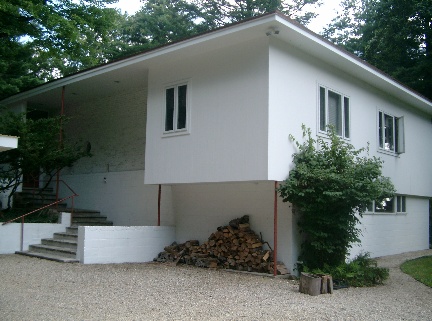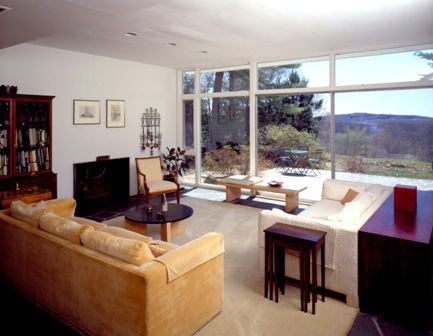
A year before Bauhaus founder Walter Gropius built his 1938 home, which later became one of Historic New England’s most popular museum properties, architect Henry B. Hoover brought the principles of Modernism to Lincoln, Massachusetts. Hoover’s 1937 family home (pictured) was the first of fifty he designed in Lincoln. Protected by a Historic New England preservation easement, this Modern masterpiece was recently sold for the first time. Now Hoover’s family is honoring his legacy by supporting an architecture and landscape fellowship with Historic New England.

Hoover’s children—Lucretia Hoover Giese, Henry B. “Harry” Hoover Jr., and the late Elizabeth Hoover Norman—along with Lucretia’s late husband, Paul Giese, chose to establish the Henry B. Hoover Fellowship, funded by bequests and other gifts to the Historic New England endowment. This twelve-month residential fellowship will be offered every other year, allowing an emerging architect to explore aspects of Modernism as part of the Eustis Estate Study Center in Milton, Massachusetts, and to have housing at a Historic New England property.
Lucretia Giese describes the fellowship as “a way of recognizing Hoover’s role in architecture but also Historic New England’s role in architecture and preservation issues.” Adds Harry Hoover, “We wanted to preserve our father’s memory in a meaningful way, rather than just give money. [The fellowship creates] an opportunity to do the kind of work that our father was known for. It’s a way of paying him back.”
In 2015 Lucretia and Harry co-authored a book, Breaking Ground: Henry B. Hoover, New England Modern Architect, which chronicles their father’s life and work. Lacking an academic platform, Hoover’s name is less well-known than some Modern architects despite his prolific and significant output. “He didn’t talk much,” says Harry. “He didn’t write much. He was a doer.”
The siblings are passionate about preserving the unique Modern architecture in their hometown, even helping to found a non-profit, Friends of Modern Architecture—Lincoln. They are concerned about a real estate market that prizes the land on which many Modern houses are built more than the houses themselves.
“It’s becoming increasingly fragile,” says Lucretia, a professor emerita of art and visual culture at the Rhode Island School of Design. “A lot of people want big houses, or houses that are more efficient. I would urge people to be more imaginative about how they can resuscitate old houses. It’s so important to live in a house for a period of time before you make a decision about how to change it.”
Because of Historic New England’s Preservation Easement Program, the siblings can at least feel secure that the 1937 Henry Hoover House will stand the test of time. “To have such a strong program in a fragile housing environment is such a relief,” says Harry, adding, “There is a link between the Preservation Easement Program and this fellowship. We are perpetuating, directly or indirectly, what he gave.”
The Henry B. Hoover Fellowship is an example of a planned philanthropic gift that makes a lasting contribution. Historic New England staff works with donors to find planned giving opportunities that fit their passions. Email [email protected] or call 617-994-5951 to learn more.